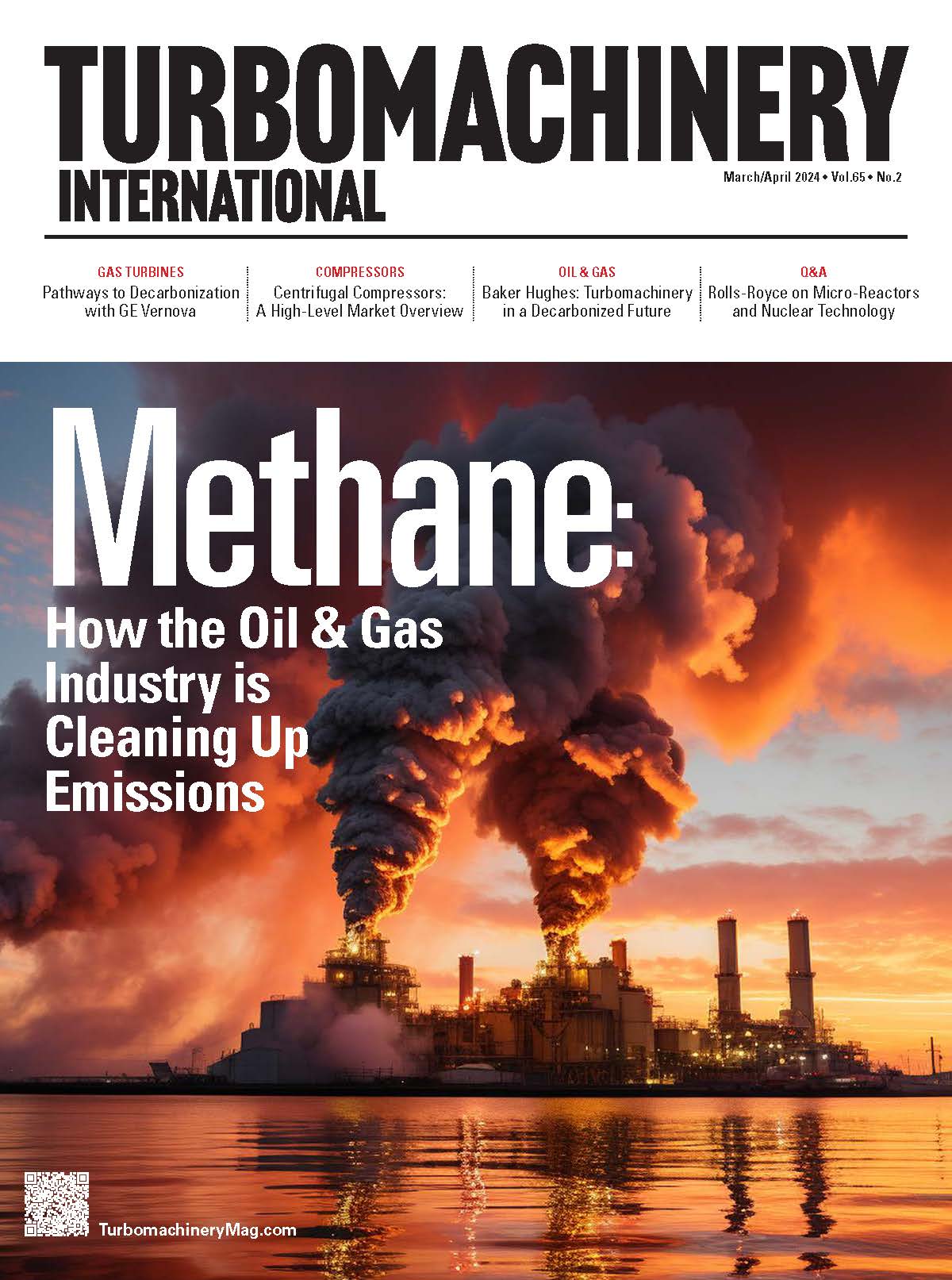Turbo Tips: Practical Notes & Useful Guidelines on Modern Gas Turbines
Gas turbines, including the air compressor and combustion chamber, face challenges such as high temperatures and the need for blade-cooling systems.
Gas turbines have an upstream axial air compressor coupled to a downstream turbine section and a combustion chamber in between. The fresh air that flows through the air compressor increases pressure. Energy is then added by spraying fuel into the air and igniting it so that the combustion generates a high-temperature, high-pressure gas flow. This high-energy gas enters the turbine section, where it expands down to the exhaust pressure, producing a shaft work output. The turbine shaft work drives the air compressor and driver, such as a gas compressor, large pump, electric generator, etc. Energy not used for the shaft work comes out in the exhaust gas—a high-temperature gas with a relatively high velocity. In many gas turbines, heat recovery steam generators (HRSGs) are installed to recover some heat from the exhaust.
CHALLENGES
Higher combustion temperatures can allow for greater efficiencies; however, temperatures are limited by the ability of the turbine’s materials to withstand high temperatures and stresses. To combat this, many turbines feature complex blade air-cooling systems.
The smaller the gas turbine, the higher the rotating speed of the shaft(s) required to maintain the tip speed. The blade-tip speed determines the maximum pressure ratios obtained by the turbine and air compressor. This, in turn, limits the maximum power and efficiency obtained by the gas turbine. For example, medium-sized gas turbines (5 - 15 MW range) operate around 10,000 rpm, while small micro-turbines (60 - 100 kW) spin as fast as 300,000 rpm.
INTERNAL AIR SYSTEM
Internal air systems play a vital role in modern gas turbines and impact efficiency, performance, and reliability. They provide air for blade cooling and other purposes. Approximately 8 - 16% of the air provided by the air compressor is used for cooling, sealing, and other applications.
TURBINE SECTION
The flow in axial turbines is inherently unsteady due to the relative motion between rotor and stator blade rows. In a turbine, the incoming wakes are chopped by the rotor blades and then diffused and deformed as they pass through the non-uniform pressure field in the rotor passage. These unsteady phenomena affect the performance of airfoils and generate noise and vibration.
The loss in efficiency due to different internal leakages or tip clearance flows accounts for an important part of the overall losses in gas turbines. Different clearance gaps, between 0.5 - 1.5 mm, are used in different sections. Sometimes higher clearance gaps (2 mm or more) might be required. The losses caused by leakage flow over blades can be minimized by reducing the leakage. A tip shroud reduces leakage and improves blade performance.
CASE STUDY
A case study using a 15-MW twin-shaft industrial gas turbine for a gas compressor drive application helps demonstrate these principles. The turbine contains a compact gas generator and a three-stage power turbine, incorporating the latest aerodynamic and combustion technologies. It has a simple-cycle efficiency of 38% with waste heat recovery for steam generation. The mass and temperature of the exhaust gas are approximately 41 kg/s and 535° C, respectively. The exhaust gas is fed into the HRSG.
The axial air compressor of the gas turbine has 12 stages with a total pressure ratio of 18.5. (Pressure ratio is estimated at 1.28 per stage.) The air compressor has five-stage variable guide vanes to ensure surge-free flexible performance in a wide range of operations. The speed of the air compressor and high-pressure turbine is around 14,500 rpm. The turbine uses a sophisticated shrouded concept. The nominal speed of the output shaft turbine is 9,600 rpm. The power turbine is directly coupled to the gas compressor. The speed of the power turbine varies between 5,600 rpm and 10,000 rpm (58% - 104% of the nominal speed). This variable speed range can offer excellent operational flexibility to the compressor driver and the entire turbomachinery train.
The temperature of ambient air could affect turbine-produced power and, consequently, compressor performance. Approximately 100 kW (0.7%) of produced power is reduced with each 1° C rise in the ambient temperature. However, since the margin for the power rating and operational flexibility are provided, this is of no concern. More than a 17% margin was considered for the driver’s size. Combined with the flexibility of a gas turbine and wide variable speed range, the gas turbine/compressor train can handle all operating scenarios in all possible ambient temperatures.
Amin Almasi is a Chartered Professional Engineer in Australia and the U.K. (M.Sc. and B.Sc. in mechanical engineering). He is a senior consultant specializing in rotating equipment, condition monitoring, and reliability.



















